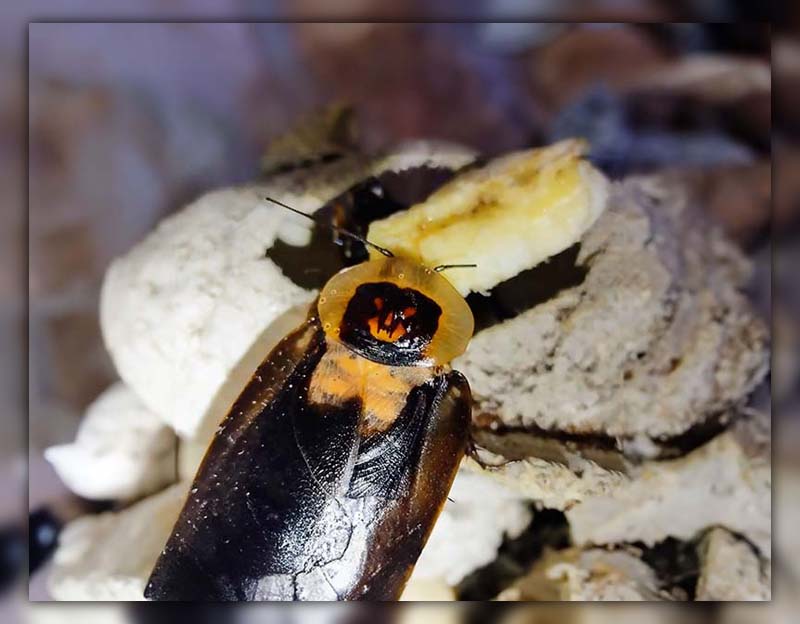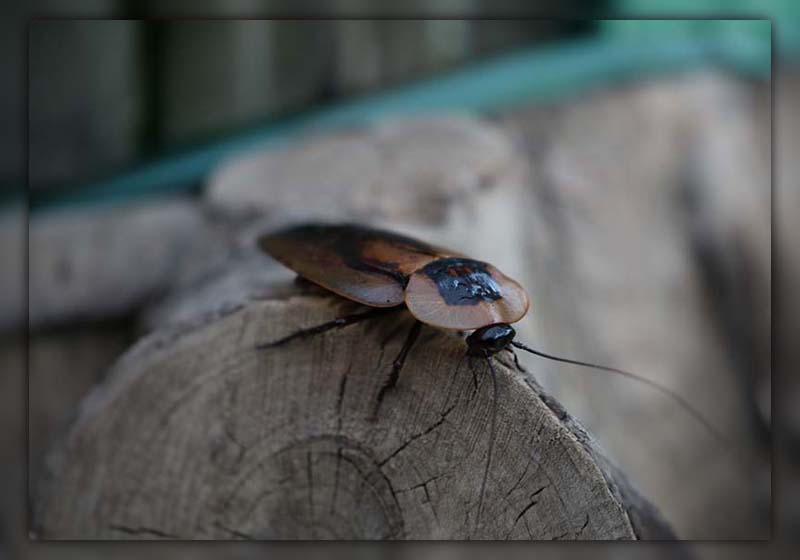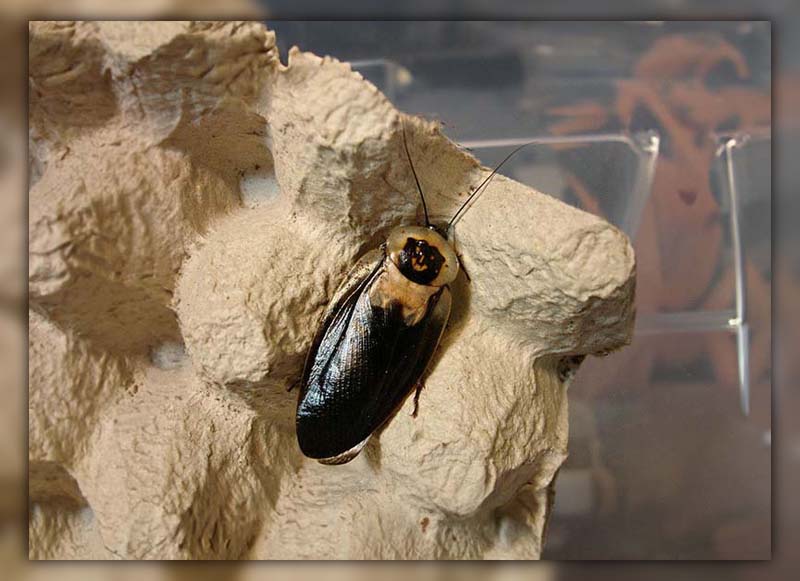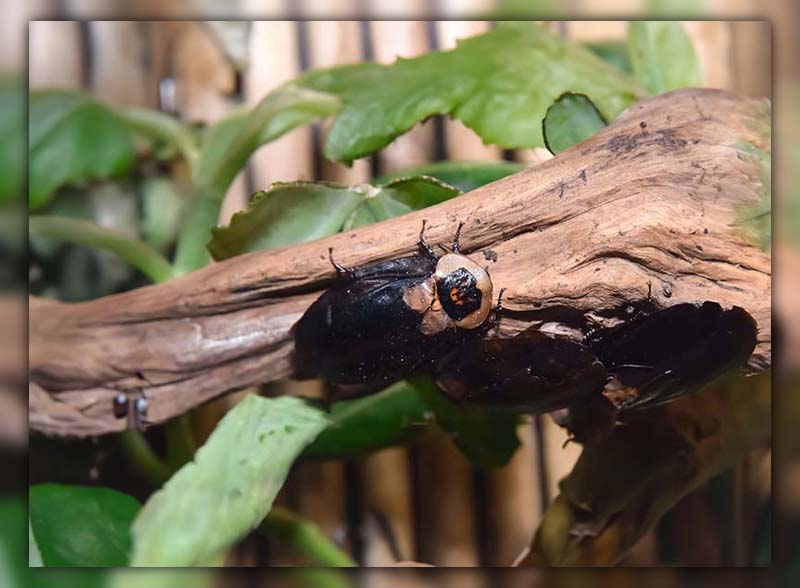Few insects attract as much attention as the Death’s Head Cockroach with its mysterious markings and large wings.
Today, we explore the mystery surrounding this fascinating insect.
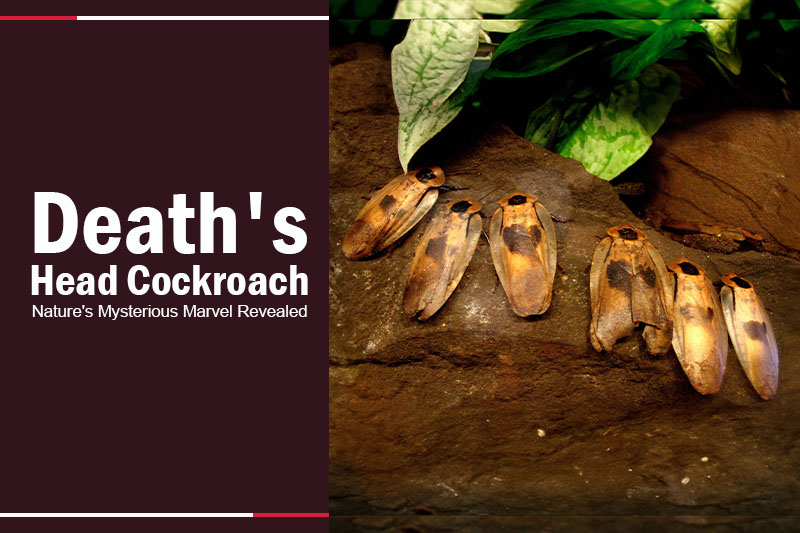
What Is Death’s Head Cockroach?
The Death’s Head Cockroach is an intriguing large-winged insect native to regions like Mexico, the West Indies, and Central America.
Interestingly, they’ve also made their way to Florida. One of the unique features of this roach is the small black mark on their cockroach head, resembling a “Death’s head.” While they sport black wings, they aren’t known for flying.
Instead, they use these wings to gracefully glide from higher spots to lower ground.
Contrary to the common perception of cockroaches as pests, many enthusiasts keep the Death’s Head Roach as a pet, either solo or in small clusters.
Read more Can roaches Fly? Airborne Secrets Revealed!
The Scientific Name For The Death’s Head Cockroach
Blaberus craniifer is the scientific name for the Death’s Head Cockroach. Among the myriad of cockroach species, only one is recognized as the true Death’s Head Cockroach.
Its unique and defining mark not only gives it its common name but also influences its scientific nomenclature.
The term “Craniifer” stems from Latin, meaning “Bearer of the head.”
How to Recognize The Death’s Head Cockroach
The Death’s Head Cockroach can be identified by its size of around two inches and its dark brown, almost black, hue.
It sports a lengthy oval-shaped body. The defining feature is on its paler brown pronotum, which is the head section of its exoskeleton.
Here, it exhibits a black mark dotted with reddish-orange spots, eerily reminiscent of a skull or maybe a jack-o-lantern face.
This roach can be mistaken for its lookalike, the Discoid Cockroach (Blaberus discoidalis), often referred to as the False Death’s Head Cockroach.
While the Discoid also has a black mark on its head, it lacks the reddish-orange specks, making it seem less face-like.
Moreover, it doesn’t possess the distinct black wings found on the true Death’s Head Cockroach.
Where You Can Locate The Death’s Head Cockroach?
Predominantly found in Central America and Florida, the Death’s Head Cockroach thrives in woodlands and forests.
Their ideal hideouts include leaf litter, debris, and decaying logs. In times of limited food supply, they might resort to munching on the rotting wood until they stumble upon a more nutritious source.
Naturally inclined towards warm and humid environments, these roaches, when kept as pets, require enclosures that emulate such hot and moist conditions.
Read more Wood roach vs House roach: Spotting the Difference!
What The Death’s Head Cockroach Likes To Eat?
The Death’s Head Cockroach has a varied palate, being an omnivore. They primarily feast on vegetation, carrion, smaller bugs, and occasionally even wood or feces.
Impressively, they can eat up to half their body weight in a single meal. For those who keep them as pets, these roaches are not fussy eaters.
They’re content munching on pet food, dampened cereals, and an assortment of fruits and veggies.
However, in their natural habitat, they need to watch out! Many predators like birds, reptiles, spiders, and amphibians have a taste for these cockroaches.
Tips For Caring For Death’s Head Cockroaches?
Death’s Head Cockroaches are among the more straightforward roaches to look after, with resilience similar to that of the Madagascan hissing cockroach.
An interesting feature is that they can’t scale the sides of glass or plastic enclosures, making containment breezy.
Even though they sport wings, they aren’t equipped for flight. Instead, these roaches have a knack for gliding off surfaces.
If you’re handling one, don’t be surprised if it decides to jump and glide to its desired spot.
When setting up their habitat:
- Substrate: Opt for a forest bed substrate (or any pesticide-free peat) about 3 inches deep. This provides nymphs, the young ones, with an ideal space to burrow. Adult roaches tend to remain on the surface due to their wings, which make burrowing challenging.
- Shelter: Ensure you add hideaways like decaying logs or cork bark in their enclosure. These roaches love to tuck themselves underneath these shelters.
- Temperature and Humidity: To encourage breeding, maintain a warm environment, ideally between 85-95°F. Humidity levels should range from 65-85%. While true Death’s Head Cockroaches breed at a more leisurely pace, the false variants breed much faster, making them more common in pet stores.
- Feeding: They aren’t picky eaters. Regular servings of fresh fruits and vegetables, particularly plums and carrots, should suffice. They also relish wet dog food and damp cereals. To ensure a tidy environment, use a shallow dish for their food. Additionally, provide water in a dish, but pop in a cotton pad to soak up the water, preventing any drowning mishaps.
Read more How to clean roach droppings: Pro Tips for a Spotless Home!
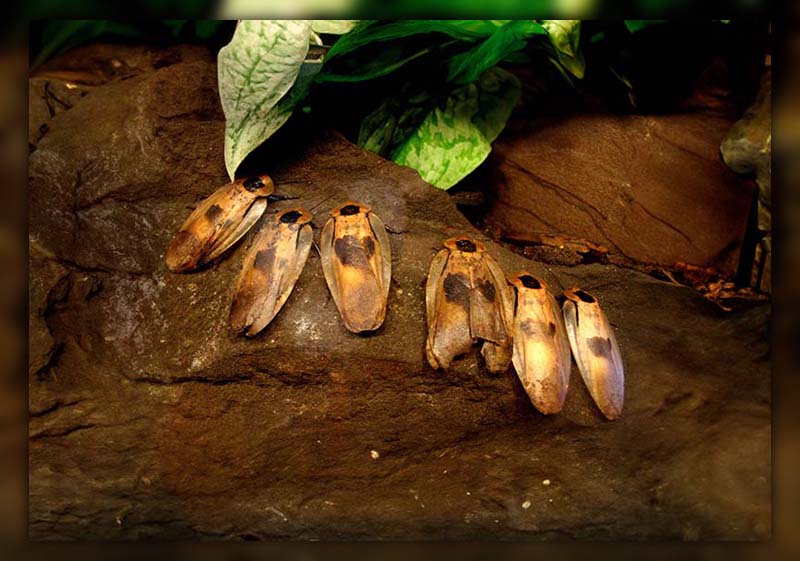
FAQ
Why is it named the death’s head cockroach?
The moniker “Death’s Head Cockroach” is attributed to the unique mark on its thorax, reminiscent of a jack-o-lantern or skull.
What is the diet of the death’s head cockroach?
These cockroaches are not picky eaters! Being omnivores, they’re open to consuming almost any organic material.
Can death’s head cockroaches fly?
While they’re equipped with black wings, flying isn’t their forte. However, they’re adept at using these wings to glide short distances when needed.
Conclusion
The Death’s Head Cockroach showcases nature’s intricate wonders and uniqueness. We’ve unraveled its mysteries from habitats to characteristics.
Now, it’s your turn to share your tales and encounters with this captivating insect. For more mesmerizing insect narratives, continue exploring Pestweek.
Share, discover, and let your curiosity lead the way!

Calina Mabel has over 15 years of experience in the field of journalism and communications. Currently, Calina Mabel is the Content Writer for categories such as Cockroach, Ants, Bed Bugs, Mosquito, Rodent, Termite, and Flies on Pestweek.com. She aims to build content for these categories with a focus on providing valuable and accessible information to readers, in order to create the world’s largest knowledge community about Pests.
All content written by Calina Mabel has been reviewed by Emily Carter.


